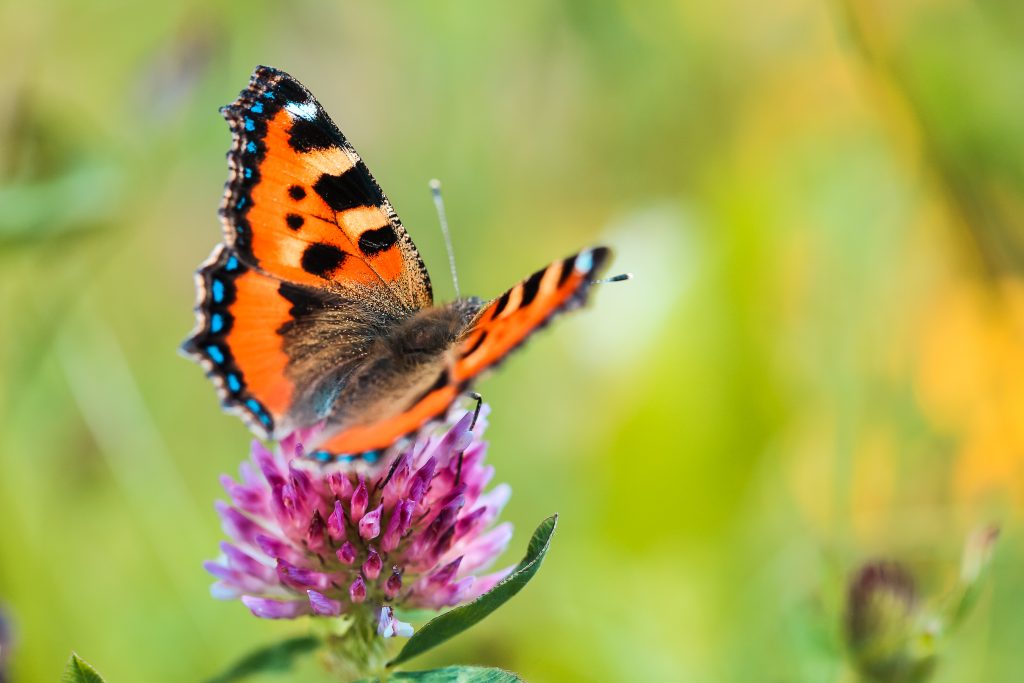Travel to any major city in China and you’ll see something amazing: Hundreds of people doing Tai Chi forms in the park together. The Chinese learned centuries ago that karate helps you look and feel younger. And it’s not just seniors, either. People of all ages are discovering how karate can turn back the clock, slow down the aging process and help them become stronger, more flexible and feel better.
People always look for a “magic pill” to roll back aging. It does not exist. The secret is physical activity. It”s truly the closest thing we have to a “fountain of youth”. Many of the limitations we see as “age-related” are actually a result of inactivity.
Each month, I talk a lot about our kids programs. But this month, I want to focus on the benefits of karate for people at the other end of the spectrum: those over 40. You see, there are definite physical changes that occur as we age. Karate can combat these age-related changes and serve as a valuable anti-aging regimen. But the first step is knowing how aging affects a person’s fitness.
Your “fitness” can be grouped into five areas or “domains”:
Balance
2. Strength
3. Posture
4. Flexibility
5. Endurance
All five of these areas change as we age. The changes may be subtle at first: you”ll feel older, have less energy, become stiffer and speed up the aging process. But, without intervention, these changes get worse.
Also, all five key areas of fitness work together. A loss in strength affects balance. Diminished endurance affects strength. Poor flexibility hurts posture. And so on.
The good news, however, is that all five areas of your fitness can be improved (sometimes dramatically) with karate training. You can reverse the aging process, feel years younger and literally turn back your biological clock. So, let”s take a closer look at each of these five domains of fitness. We”re going to explore how each one changes over time and how karate can help. Let’s start with the first one, balance.
Fitness Element #1: Balance
Balance declines as you age because muscles tighten and become weaker. You also lose nerve input and blood circulation to your brain as you age. This makes it harder to correct imbalances as you walk, sit down or stand, and can put you at risk for a fall. Because of this, balance is one of the most important areas of fitness for people over 40 to maintain and improve.
While balance is one of the first things to go, it’s also the first area to improve with karate training. Beginners often notice that simply learning the proper stances creates a strong “base” and develops their balance. When you raise your leg to throw a kick, you stand on one leg, shift your weight and also improve your balance. Even better, with extended training, muscles become looser and stronger, and reflexes sharpen. This improves balance, too.
And don’t forget the cardio workout you get in karate, too! When you spar and push your heart rate up, this boosts circulation to the brain. Dr. John Medina, author of the New York Times bestselling book “Brain Rules”, says exercise is so important to the proper functioning of the brain that he makes exercise “Brain Rule #1.” He says, “exercise boosts brain power” and improves the higher-level functioning of our brains such as concentration, impulse control, foresight and problem solving. As well as balance. Next up is…
Fitness Element #2: Strength
Most people notice a 30% decline in physical strength between the ages of 30 and 80. Why? Because as you age, your muscles lose their ability to contract to a strong and efficient level. This is called “atrophy”. Muscles atrophy for two reasons: muscles lose fibers and muscle fibers shrink. Less muscle mass means less strength (and can lead to less range of motion, too).
A loss in strength normally goes unnoticed until a simple movement becomes more difficult, such as walking up stairs or lifting groceries. This is when people say to themselves, “Hmm. I’m not as strong as I once was. This used to be
easy”. When this happens, most people do the exact opposite of what they should: they tend to avoid activities and move less. But this actually speeds muscle loss because the body adjusts to a lower level of activity.
What’s the best way to build strength? Is it free weights? Machines? No. Experts agree the best way to build strength is by moving your body through space (look at Olympic gymnasts, for example). And guess what? Every single karate class you attend, what are you doing? Moving your body through space. Repetitive movements like high blocks and side kicks are better than machines and free weights when it comes to building functional muscle. Also, our forms are one of the best exercise routines ever developed. Once you master our forms, you don’t need a gym or any special equipment to work out. You have them for life. And it sure beats the stair-stepper!
Here’s how effective exercise is at fighting muscle atrophy. A recent study conducted on men and women over 90 years old revealed that after six weeks on a specific exercise plan, the participants achieved an almost 200 percent increase in strength. It”s never too late to reverse the aging process! If people in their 90’s can boost their strength, can you? Of course! Now let”s talk about the third area of fitness: posture.
Fitness Element #3: Posture
Believe it or not, posture starts to change as early as the teen years. When you”re young and your parents tell you to “sit up tall,” they may have noticed your posture was poor. Prolonged sitting, using a computer, obesity and inactivity all negatively impact your posture. We’re simply much less active than previous generations and spend more time hunched over a computer.
The hallmarks of poor posture include a more forward head and shoulders and increased bending in the knees and hips. Posture declines as you age because the disks in your back lose water content and become less spongy. As they grow more rigid, they become narrower and stiffer. With poor posture, it”s also possible to develop
conditions such as osteoporosis which is a loss in bone.
Poor posture can be reversed. Here, too, Karate can help. As instructors in karate, we put a big emphasis on good posture and proper body mechanics. You can’t execute forms and techniques without good posture (or the judges will certainly notice!). Karate also improves bone density due to jumping and impact. Weight-bearing exercises help maintain bone density as you age. Next up is…
Fitness Element #4: Flexibility
It probably comes as no surprise that flexibility declines with age. Along with balance, this is one of the areas of fitness we notice going downhill first. When you get up from a chair or walk up stairs, it”s easy to tell that your flexibility just isn’t what it used to be.
Why does flexibility decline with age? Mainly, it”s due to a loss in the body”s collagen structure. Collagen is a fibrous, connective tissue that makes up about 30% of all the protein in your body. This includes skin, muscle, bone, tendons, ligaments and cartilage. The gradual loss in the collagen causes your connective tissue to become less elastic. As a result, your muscles, joints, tendons, ligaments and other connective tissue become stiffer. Loss of flexibility decreases range of motion, making simple tasks a struggle. Plus, stiff knees, hips, arms and legs can be uncomfortable… and in some cases, downright painful.
The flip side, however, is that with karate, flexibility can bounce back quickly, even after years of inactivity. Personally, I”ve seen 60 year olds enroll in classes who could barely kick over their waists when they started… and a few months later they”re kicking up to their chests and beyond! Karate creates real flexibility through kicks, punches, forms and sparring.
Fitness Element #5: Endurance
If you”ve found yourself getting tired more quickly than in the past, you know how much the aging process decreases your endurance.  And I’m not just talking about seniors, either. With inactivity, people in their twenties also feel the effects of poor endurance.
And I’m not just talking about seniors, either. With inactivity, people in their twenties also feel the effects of poor endurance.
Reduced endurance makes it tough to perform activities like walking and running for prolonged periods of time. This is especially true if you”re also less flexible or you have weak muscles. It simply takes more energy to remain physically active.
How does the aging process reduce endurance? First, you lose elasticity in your lungs. Second, a slight stiffening in the air passages makes breathing more difficult during exercise. This reduction in oxygen to your lungs means your muscles get tired sooner. Combine that with changes in blood vessels and a decrease in your maximum heart rate and you have a formula for a dramatic loss of endurance.
It’s easy to see how karate helps endurance: Any time you increase your heart rate and lung capacity, you’re on the path to better endurance. Most people who start training in karate see a noticeable boost in endurance in the just the first couple months of training! As with other domains of fitness, endurance can improve quickly.
The Only Known Antidote to Aging
So the secret of improving your overall fitness as you age is working on all five areas simultaneously, improving each one at the same time.
Karate excels in this area: you build lean muscle mass, become more flexible, boost your endurance, improve your posture and gain balance all at the same time. I can’t think of any other activity that works on all five elements simultaneously as well as karate does.
No matter what your age is, no matter how inactive you”ve been, you can increase your fitness with karate training. One of the most wonderful things about the human body is how resilient it is. It can rise to the challenge put on it quickly and effectively.
So…it”s never too late. If you’re ready to start making your “comeback”, please read my special offer on page 8. Then see me. I’ll sit down and discuss your personal goals and help you chart out a “plan of attack” that will make you leaner, more flexible and feeling years younger…just a few short months from now!
—-Senior Master Babin



